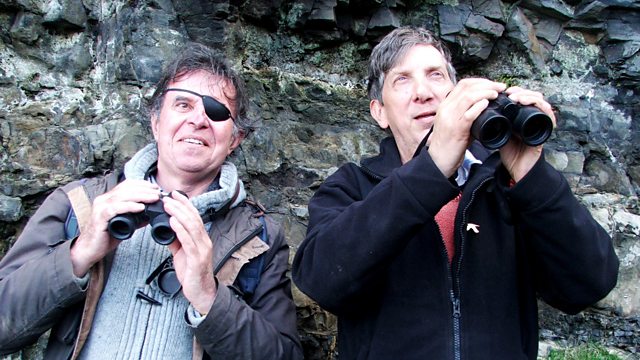3. Sea Cliffs
Brett Westwood and Phil Gates look at kittiwakes and sea pink, most likely to be found on coastal sea cliffs. From March 2016.
What does an old threepenny coin have to do with a cliff?
Find out when Brett Westwood joins naturalist Phil Gates on the Northumberland coast and discovers how plants and animals have evolved to survive the battering waves, salt spray and driving winds in one of the most hostile habitats on our coastline, the sea cliffs.
They meet a sea pink or thrift, a plant which has evolved to survive the high levels of salt by sequestering salt into its leaves which then die off, and are replaced by new leaves.
Lured by the cries of birds calling out their name "kitti-waak", "kitti-waak", they clamber across the rocks into a cove where kittiwakes and fulmars are nesting on a sheer cliff face. Brett learns why the young chicks don鈥檛 fall off their narrow ledges and how fulmars keep predators at bay (the clue is in their name which means, foul mouth).
Below the birds, as the waves pound the rocks, the surface is studded with barnacles and limpets.
Recordings by Chris Watson
Producer Sarah Blunt
First broadcast on 成人快手 Radio 4 in March 2016.
Last on
More episodes
Previous
Next
What connects an old threepenny coin and a sea cliff?

Broadcasts
- Wed 30 Mar 2016 13:45成人快手 Radio 4
- Wed 27 Mar 2019 14:15成人快手 Radio 4 Extra
- Thu 28 Mar 2019 02:15成人快手 Radio 4 Extra
- Wed 4 Sep 2024 09:30成人快手 Radio 4 Extra

